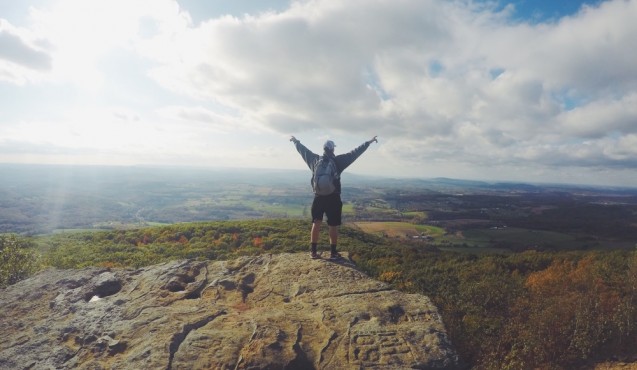Let’s Stay Together: One International Company’s Approach to ‘Holistic’ Culture

Doug Smith is president of EDSA, a landscape architecture and urban design firm based in Fort Lauderdale, Florida – but when he started at the company 28 years ago, he was just a lowly entry-level employee.
“I started here my first job out of school, and I’m still here,” Smith says.
Smith’s story of rising through the ranks at EDSA is impressive, but isn’t exactly unique: According to him, “almost everybody at the ownership level has the same story.”
In fact, EDSA rarely hires externally for mid- or upper-level roles. The vast majority of those positions are filled by existing employees who have worked their way up from the entry or intern level.
“Ninety-five percent of the people we hire are entry-level,” says Jill Martinez, executive vice president of marketing. “They come in early, they learn how we do things, and they advance. That’s why we have such a strong culture.”
One can’t argue with that: You’d have to have a pretty strong culture to get to the point where the vast majority of your senior leadership positions were filled with people who were originally hired right out of school.
EDSA has what it calls a “holistic company culture,” in which employees across all levels and teams mingle regularly with one another.
As Smith explains, “The structure of the company is what we call a ‘studio structure,’ and what that means is we have teams of people that work on projects together. We have a series of studios that make up the structure of the company, and we do a lot of sharing of personnel across studio lines so that people get exposure to different kinds of projects and people.”
Smith says this structure has played a critical role in allowing EDSA to build and maintain a strong, positive, cohesive culture.
“Everything we do is a team effort,” Smith says. “The team aspect of how we do things and how we accomplish our work is a big part of our culture. You have to be a strong team player to work effectively within our corporate culture.”

Employee Wellness: Going Above and Beyond Gym Memberships
Cara Critchlow, director of human resources at EDSA, says the company used to have a pretty run-of-the-mill employee wellness program.
“It used to pretty much be a gym reimbursement program,” Critchlow explains. “But we revised it last year!”
Now, EDSA offers employees a “wellness fund,” which they can use for any and all physical, spiritual, mental, and emotional wellness purposes.
“If people want to buy a kayak because that’s their form of exercise, they can buy it,” Critchlow says. “Some people wanted to get into scuba diving, so we researched the wellness behind that and found it had some great health benefits, so we said ‘Yes, use the fund for that!'”
“The wellness fund is about doing things that heal you – not just physically, but spiritually and emotionally as well,” Martinez adds. “For some people, that means yoga or some mental activity, and we support that.”
Smith points out that EDSA considers work/life balance a matter of employee wellness, too. For that reason, the company offers employees a lot of flexibility so that their work doesn’t interfere with their lives, or vice versa.
“If you have personal errands to run, or children to pick up, or a doctor’s appointment, you can do that freely, as long as you are contributing to the team the way you need to,” Smith says.
Training and Professional Development: Getting Creative to Serve Employees’ Needs
The entry-level employees of EDSA can’t climb their way to the president’s spot without support, which is why EDSA puts a lot of effort into offering creative training and development programs. Often, employees receive this training and development from one another.
“We try hard to push people to learn and absorb at a young age,” Smith says. “Part of what people like about EDSA is that it is an egalitarian community. We call it a ‘collective of peers.’ We try very hard to make it inclusive for everybody, to give everybody a voice in how we are conducting our business and operating.”

EDSA also works with numerous trade organizations, groups, and vendors to arrange training and development opportunities on all aspects of the industry, from design concepts to new software.
Plus, there’s the Monday morning meeting, which Critchlow describes as “a venue for anyone to step up and present on whatever they want.”
“Maybe someone went to an art gallery over the weekend and saw something really great,” Critchlow explains. “Maybe they visited a new country and learned something new. Whatever it is, they can bring it to the Monday meeting.”
Culture as a Selling Point
We’ve already seen how the culture has impacted employee satisfaction, engagement, and retention – but what about EDSA’s recruitment strategies? The company attracts talent from all over the world. How does culture play a role in those efforts?
“We regularly reach out to universities with landscape architecture licensing programs to touch base. We do trips, we get involved with workshops, we hold Skype interviews,” Critchlow says. “As we reach out, we always try to talk a lot about the culture here at the firm.”
Critchlow says the most common question candidates and interested students ask is, “What is it like to work here?” At EDSA, the answer is “It’s like joining a family.”
“Everybody really relies on one another to become each other’s immediate family,” Critchlow says.
In part, that’s because many of the people who join EDSA are relocating to the offices in Florida from elsewhere – from other states, other countries, and other continents.
But that doesn’t mean they’re lonely.
“The friendships and relationships formed through the workplace are pretty incredible here,” Critchlow says.

